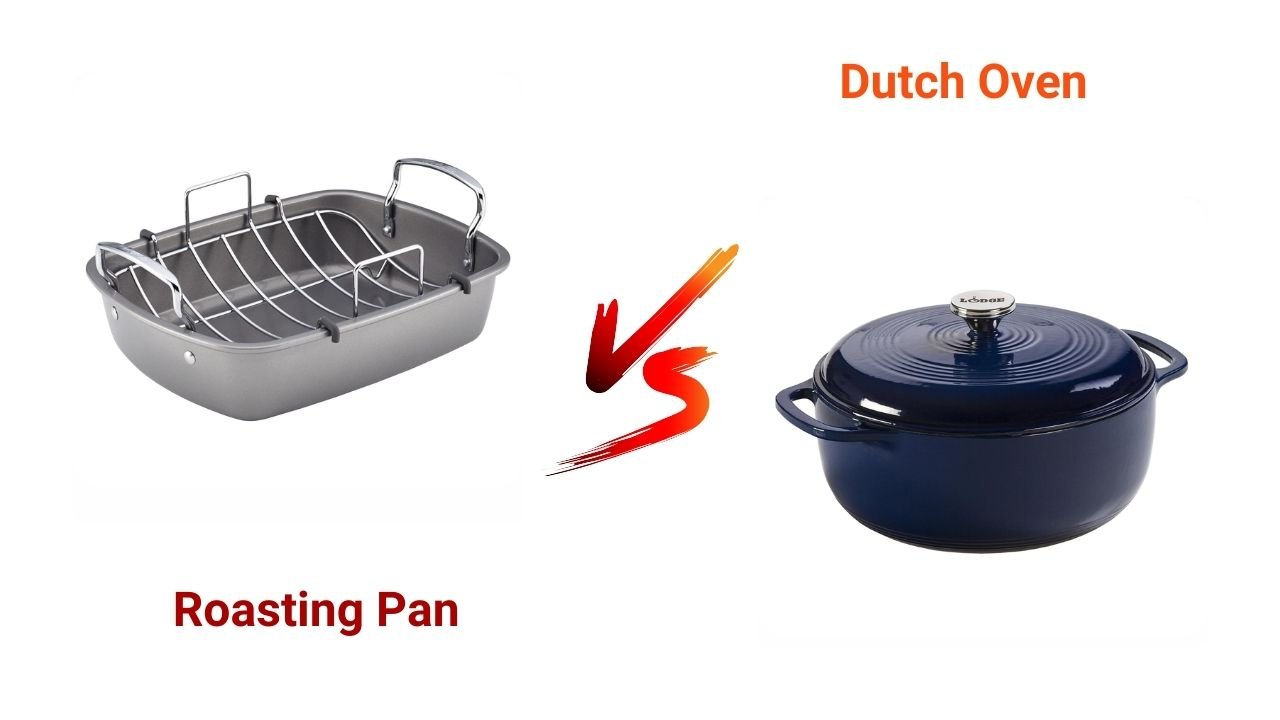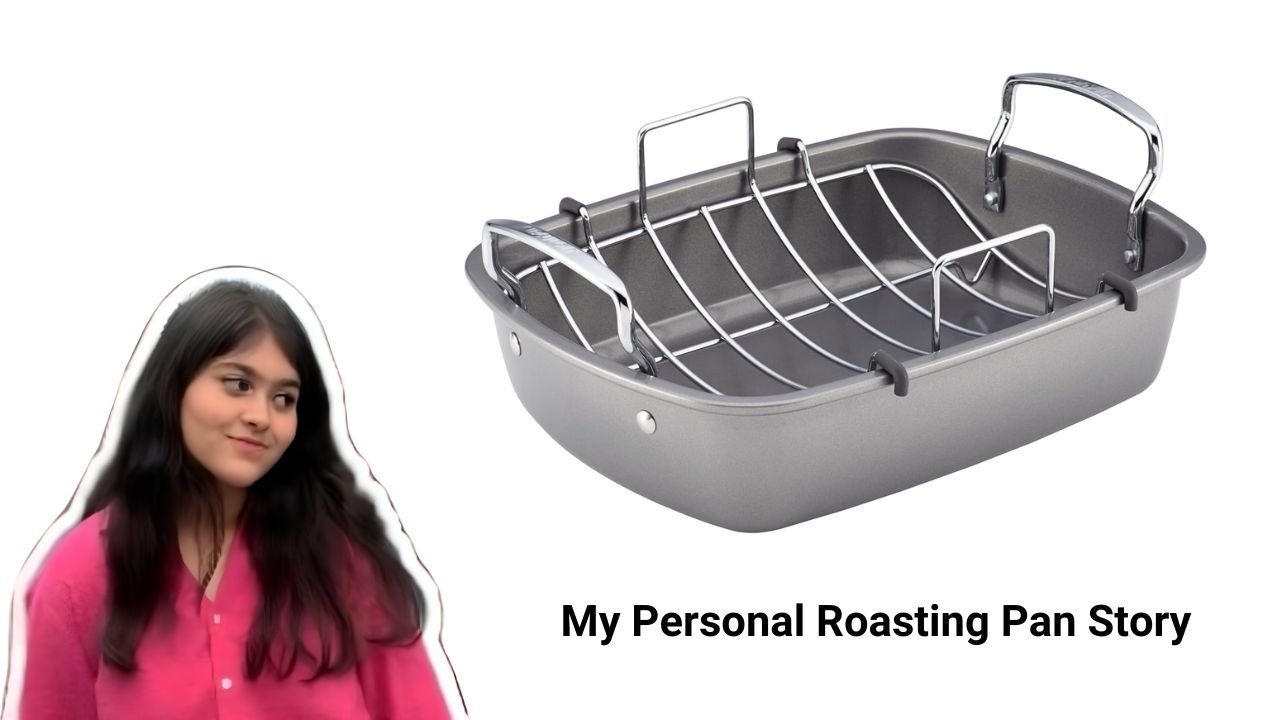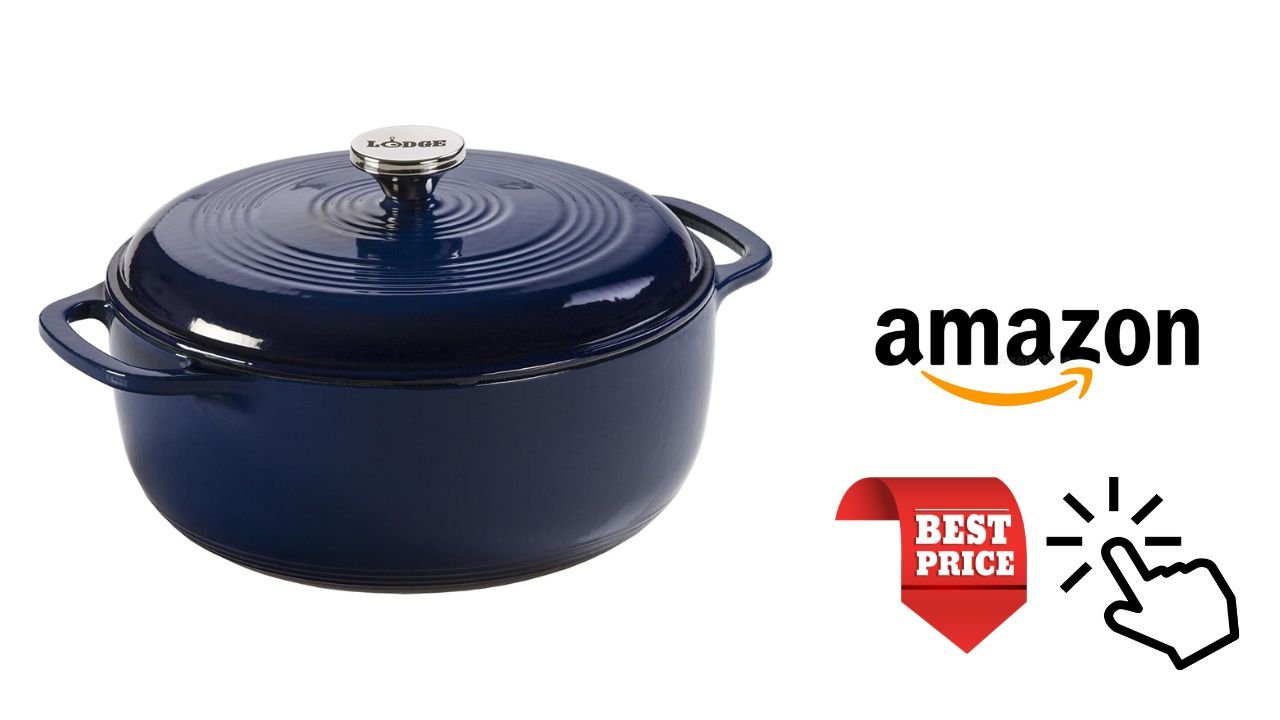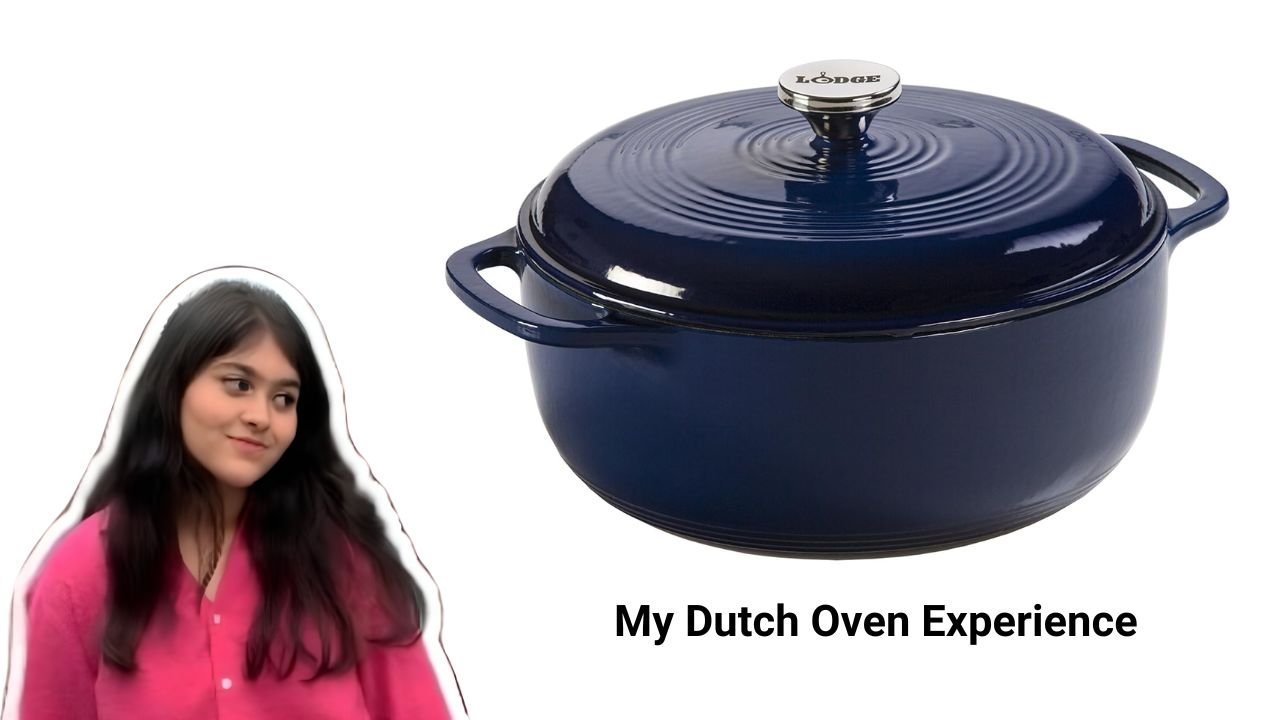When deciding between a roasting pan vs Dutch oven, consider that the roasting pan is better for large roasts, while the Dutch oven excels in slow cooking, stews, and versatile one-pot meals.
When it comes to choosing between a roasting pan vs Dutch oven, it can be a bit overwhelming, especially since both are essential kitchen tools. Over the years, I’ve found that each serves a unique purpose in my kitchen, and understanding the differences can help you make the right decision based on your cooking style. From roasting a perfect Thanksgiving turkey to simmering a hearty stew, both of these pans have their strengths and weaknesses. But which one should you choose?
In this article, I’ll share my personal experiences with these two pieces of cookware and help you decide which one works best for your needs. Let’s dive in and explore the benefits of each, so you can confidently pick the one that will make your meals easier and more enjoyable.
Roasting Pan: The Unsung Hero of Roasting
I’ve spent many years using roasting pans, especially during the holidays, and they’ve never let me down. These pans are designed specifically for roasting large cuts of meat like turkey, lamb, and prime rib, making them perfect for festive meals. But beyond that, I also use them to roast vegetables, bake casseroles, and even serve food directly from the pan at gatherings.
What Makes Roasting Pans Special?
- Material and Durability: Most roasting pans are crafted from durable materials like stainless steel or aluminum, ensuring even heat distribution. This makes them perfect for cooking large portions of food evenly.
- Versatility: A roasting pan is incredibly versatile. From roasting meats and baking casseroles to even broiling fish, I find that it does a bit of everything.
- Easy Cleanup: One of my favorite features of roasting pans is their easy-to-clean nature. Many come with a non-stick surface or polished finish, making post-cooking cleanup a breeze.
Pros and Cons of Roasting Pans
What I Love:
- Long-Lasting: With the right care, a good-quality roasting pan can last for years.
- Multi-Purpose: I can roast meats, bake casseroles, or serve food right from the pan.
- Convenient Size Options: Whether I’m cooking a small dinner or preparing a feast, there’s always a roasting pan that fits the job.
What Could Be Better:
- Heavy Pans: Especially when full, a good-quality roasting pan can be quite heavy, which makes it tricky to maneuver.
- Cost: High-end roasting pans, like those made of stainless steel, can be a bit pricey.
- Non-Stick Coating: Over time, non-stick coatings can begin to scratch or peel, which may affect the pan’s performance.
My Personal Roasting Pan Story
One of my most memorable experiences with a roasting pan was preparing a Thanksgiving turkey. I used a heavy-duty stainless steel roasting pan, and it helped me achieve a beautifully golden-brown turkey. The even heat distribution resulted in juicy meat and crispy skin, and my family was beyond impressed. Since then, I’ve used my roasting pan countless times for everything from roasting chicken with veggies to baking casseroles.
Dutch Oven: The Kitchen Workhorse
Now, let’s talk about my absolute favorite piece of cookware—the Dutch oven. Whether it’s a comforting stew or a loaf of homemade bread, the Dutch oven is my go-to. Made from heavy cast iron, it retains heat beautifully and can go from the stovetop straight to the oven without missing a beat.
Why I Love My Dutch Oven
- Versatility: What truly sets Dutch ovens apart is their versatility. From braising meats to baking bread, Dutch ovens can handle a wide range of cooking methods, including frying and slow cooking.
- Long-Lasting: Dutch ovens are built to last, and their durability is unmatched. I’ve had my Dutch oven for years, and it’s still going strong.
- Looks and Functionality: Not only are Dutch ovens incredibly functional, but they also look beautiful. The colorful enamel finishes make them an attractive piece to serve in.
Pros and Cons of Dutch Ovens
What I Love:
- Heat Retention: The cast iron material helps distribute and retain heat evenly, making it perfect for slow cooking or simmering.
- Built to Last: With proper care, a Dutch oven can last a lifetime, making it a long-term investment.
- Ease of Cleaning: Enamel-coated Dutch ovens are a breeze to clean, eliminating the need for seasoning and reducing the risk of rusting.
What Could Be Better:
- Weight: A Dutch oven can be incredibly heavy, especially when filled with food. Lifting it can feel like a workout.
- Price: While a Dutch oven is an investment, premium brands like Le Creuset can be quite expensive.
- Fragile Enamel Coating: The enamel coating on Dutch ovens can chip if dropped, so it requires a little more care.
My Dutch Oven Experience
One of the first things I made in my Dutch oven was a simple beef stew. The slow cooking process allowed the flavors to meld beautifully, and the end result was a rich, flavorful dish that I’ll never forget. I’ve also used it to bake bread, and there’s something magical about the golden, crispy crust that forms in a Dutch oven.
Roasting Pan vs Dutch Oven: A Comparison Table

Let’s break down the differences between a roasting pan vs Dutch oven in a quick comparison table:
| Feature | Roasting Pan | Dutch Oven |
|---|---|---|
| Best For | Large roasts (turkey, prime rib) | Soups, stews, bread baking, braising |
| Material | Stainless steel or aluminum | Cast iron with enamel coating |
| Heat Distribution | Even heat for roasting | Excellent heat retention and even cooking |
| Ease of Cleaning | Easy to clean, often non-stick | Easy to clean with enamel coating, but needs care |
| Weight | Lightweight | Heavy, especially when full |
| Durability | Long-lasting, but prone to dents | Extremely durable and can last a lifetime |
| Cost | Affordable, mid-range | Expensive, especially premium brands |
When to Choose a Roasting Pan
A roasting pan is ideal if you often cook large cuts of meat, especially during the holidays or family gatherings. Its design allows for large portions, and if you love crispy roasted vegetables or meats, it’s the tool for the job. If you entertain often or enjoy making big meals, a roasting pan will become your best friend. Additionally, it’s lighter and easier to handle than a Dutch oven.
When to Choose a Dutch Oven
On the other hand, if you love one-pot meals, slow cooking, or baking bread, a Dutch oven is your best option. It’s perfect for simmering soups, stews, or chili, and the heat retention allows for even cooking over long periods. I find myself using my Dutch oven nearly every week because of its versatility and durability. If you don’t mind a heavier pot and want something that will last decades, the Dutch oven is worth the investment.
Roasting Pan vs Dutch Oven: Which Is Better for You?
Choosing between a roasting pan vs Dutch oven comes down to how you cook. If you often roast large cuts of meat or enjoy entertaining, a roasting pan should be your go-to. But if you need a versatile, all-around tool for everything from slow cooking to baking, the Dutch oven is hard to beat.
Read More: Pie Pan vs Tart Pan: My Honest Take
FAQs About Roasting Pan vs Dutch Oven
Can I use a Dutch oven as a roasting pan?
Yes, you can use a Dutch oven for roasting smaller cuts of meat, but it won’t offer the same large surface area as a roasting pan, making it less ideal for big holiday meals.
Which one is better for daily use, a roasting pan or a Dutch oven?
A Dutch oven is more versatile for daily use, as it can handle everything from soups and stews to bread baking. A roasting pan is better suited for occasional use, particularly for large roasts.
Are Dutch ovens more durable than roasting pans?
Yes, Dutch ovens are typically made from cast iron, which is more durable than the aluminum or stainless steel used in most roasting pans.
What’s the main difference between a roasting pan and a Dutch oven?
The main difference is in their design and use. A roasting pan is shallow and open, ideal for roasting large cuts of meat, while a Dutch oven is deep, enclosed, and perfect for slow cooking, braising, and baking.
Can a roasting pan be used for slow cooking like a Dutch oven?
While a roasting pan is great for high-heat roasting, it doesn’t provide the same enclosed environment necessary for slow cooking or braising as a Dutch oven does.
What is the cost difference between a roasting pan and a Dutch oven?
Roasting pans tend to be more affordable, usually ranging from $30 to $70, while Dutch ovens, especially high-end brands like Le Creuset, can range from $50 to $300 or more.
Can I bake bread in a roasting pan?
A roasting pan is not ideal for bread baking, as it doesn’t retain heat as well as a Dutch oven. A Dutch oven creates a perfect environment for baking bread with a crispy crust.
Final Thoughts
After using both a roasting pan vs Dutch oven, I can confidently say that each has its place in the kitchen. The roasting pan is perfect for large meals, especially when I need to feed a crowd. On the other hand, the Dutch oven is my go-to for slow-cooked dishes, soups, stews, and bread. If I had to choose one, the Dutch oven would be the more versatile option, but having both in my kitchen makes me feel prepared for any cooking challenge. What about you? Which one will you add to your kitchen arsenal?

Hey, I’m Nandoza Ahammad, passionate food enthusiast and creator of narzcookingcave.com, shares delicious recipes and cooking tips worldwide.




